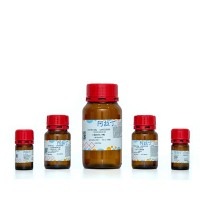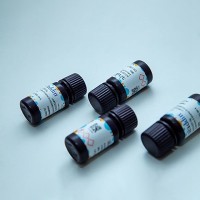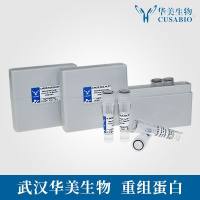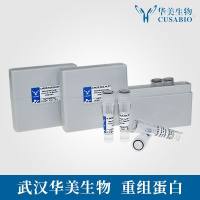Denaturing Discontinuous Polyacrylamide Gel Electrophoresis (SDS-PAGE)
互联网
-
Assemble each gel sandwich by stacking, in order, the notched aluminum plate, two 0.75-mm spacers, and a glass plate. It is important that the spacers are aligned properly, with the ends flush with the top and bottom edges of the plates, and the flanged edge of the T-shaped spacer positioned against the outside edges of the glass plate. Place a piece of wax paper between each sandwich to facilitate separation after polymerization (optional).
-
Fit the gel sandwiches (usually four at a time) tightly in the multiple gel caster. Fill any remaining space in the mold by including additional glass plates.
-
Place the front face plate on the caster, clamp it in place against the silicone gasket, and verify the alignment of the glass plates and spacers.
-
Prepare the separating gel solution as indicated by the table below. Do not add TEMED or ammonium persulfate until ready to pour.
-
Fill a 50-ml syringe with the solution and slowly inject it into the caster until the gels are 6 cm high, allowing 1.5 cm for the stacking gel.
-
Overlay each gel with 100 ul H2O-saturated isobutyl alcohol or 0.1% SDS. Allow gels to polymerize for approximately one hour.
-
Remove any remaining gel overlay solution by blotting the top of each gel with a piece of Whatman 3mm paper.
-
Prepare the stacking gel solution as described below. Fill a 10-ml syringe with the solution, and inject into each gel sandwich until the top is reached.
-
Carefully place an appropriate comb into each gel, taking care not to trap any bubbles. Allow gel to polymerize for about 1 hour.
-
Remove the front faceplate of the caster. Carefully remove the gels, and separate using a razor blade.
-
The gels can be stored with the combs in place tightly wrapped in plastic wrap inside a sealable bag at 4°C for 2 to 3 weeks. Keep the gels moist. Do not store gels in the multiple caster.
-
The gels can be stored with the combs in place tightly wrapped in plastic wrap inside a sealable bag at 4°C for 2 to 3 weeks. Keep the gels moist. Do not store gels in the multiple caster.
-
When ready to run the gel, remove the comb and rinse the sample wells with running buffer (1x SDS/electrophoresis buffer, see below). Place a line indicating the bottom of the each well on the front glass plate, or use a well template.
-
Fill the upper and lower buffer chambers with running buffer. The upper chamber should be filled to 1 to 2 cm above the notched plate.
-
Using the marks on the glass plate or the well template as a guide, pipette the prepared samples into the wells.
-
Electrophorese the samples at 10 mA constant current per 0.75-mm gel until the dye front reaches the top of the separating gel (45 minutes). Increase current to 20 mA per gel, and continue run until the bottom of the gel is reached (1 hour).
-
These recipes produce 30 ml of separating gel, adequate for casting four minigels of dimensions 0.75 mm x 7.3 cm x 8.3 cm.
-
Units of all numbers in the table are milliliters.
-
Best to prepare fresh.
Preparation of the separating gel
In a 50-ml conical tube, mix 30% acrylamide/0.8% bisacrylamide solution, 4x Tris-Cl/SDS, pH 8.8, and dH2O. Degas the solution under vacuum 10 to 15 minutes. Add 10% ammonium persulfate and TEMED. Swirl gently to mix. Use immediately.
In a 50-ml conical tube, mix 1.30 ml of 30% acrylamide/0.8% bisacrylamide, 2.50 ml of 4x Tris-Cl/SDS, pH 6.8, and 6.10 ml dH2O. Degas under vacuum 10 to 15 minutes. Add 50 µl of 10% ammonium persulfate and 10 µl TEMED. Swirl gently to mix. Use immediately. Produces 10 ml of stacking gel, sufficient for four minigels. The stacking gel is prepared in this way regardless of the acrylamide concentration used in the separating gel.
30% acrylamide/0.8% bisacrylamide (30.8% T 2.6% C)
Mix 60.0 g acrylamide and 1.6 g N,N'' -methylene-bisacrylamide in a total volume of 200 ml dH2O. Filter solution through a 0.45 µm filter and store at 4°C protected from light. Discard after 30 days.
-
CAUTION: Acrylamide and bisacrylamide are potent neurotoxins and are absorbed through the skin. Wear a mask while weighing the powder. Gloves and a lab coat should be worn when handling the solution. Do not mouth pipette.
Dissolve 12.1 g Tris base in 80 ml dH2O. Adjust pH to 6.8 with 1 N HCl. Add dH2O to 200 ml total volume. Filter the solution through a 0.45 µm filter, add 0.8 g electrophoresis-grade SDS, and store at 4°C.
4x Tris-Cl/SDS, pH 8.8 (1.5 M Tris-Cl/0.4% SDS)
Dissolve 182 g Tris base in 600 ml dH2O. Adjust pH to 8.8 with 1 N HCl. Add dH2O to 1000 ml total volume. Filter the solution through a 0.45 µm filter, add 4 g electrophoresis-grade SDS, and store at 4°C.
5x SDS/electrophoresis buffer (0.125 M Tris, 0.960 M glycine, 0.5% SDS)
Dissolve 15.1 g Tris base, 72.0 g glycine, and 5.0 g electrophoresis-grade SDS in a total volume of 1000 ml dH2O. Do not adjust the pH of the solution (should be pH 8.3 when diluted). Store at 4°C. Dilute to 1x for working solution.








